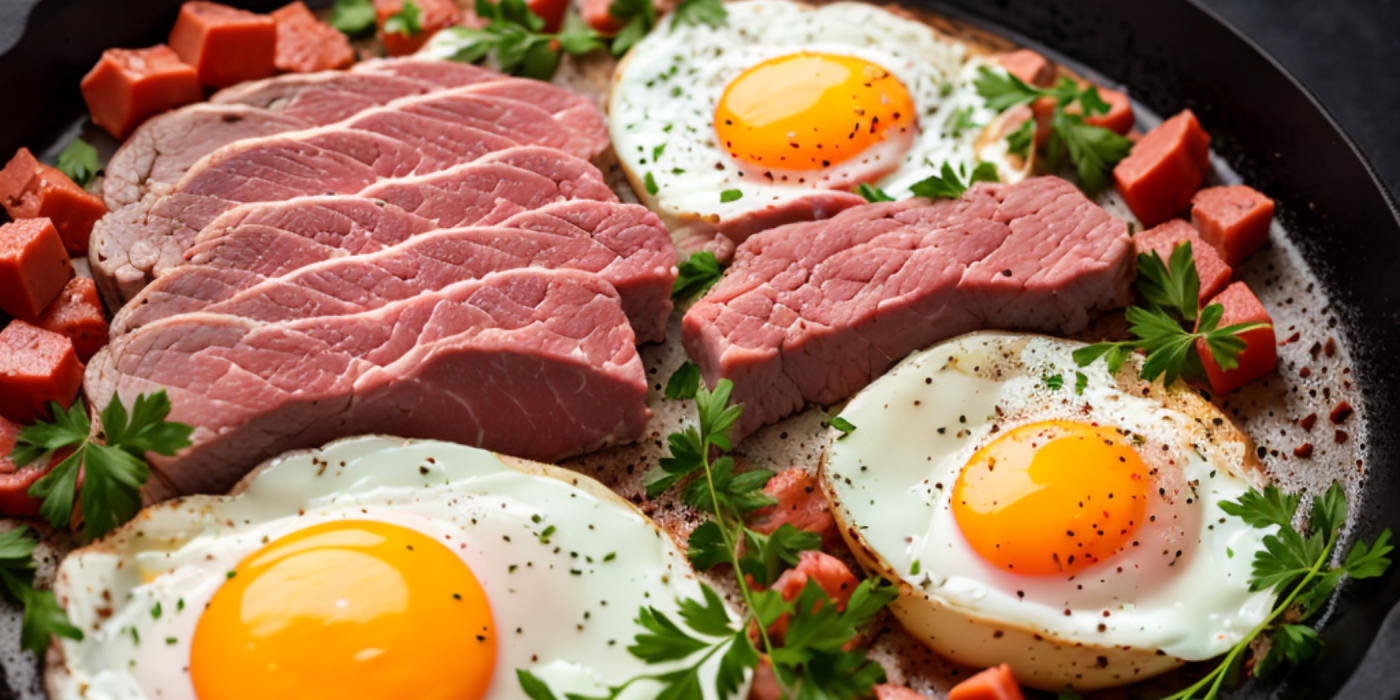Demystifying the Atkins Diet: Your Guide to a Low-Carb Lifestyle

For many seeking a pathway to weight loss and better health, the Atkins Diet has become a well-recognised beacon in the world of low-carb dietary plans. Its popularity is rooted not just in its promise of swift weight loss, but also in the prospect of a dietary shift that allows for hearty meals, sans the usual carb-laden suspects.
The Atkins Diet, named after its creator Dr Robert Atkins, an American cardiologist, is premised on a seemingly simple principle: when you cut down on your carbohydrate intake and increase your consumption of protein and fat, your body switches gears, transforming from a carb-burning machine into a fat-burning one. It's a process known as ketosis, which has gained considerable spotlight in recent years as an effective route to weight loss and improved health markers.
However, beyond the buzzwords and scientific jargon, what does the Atkins Diet truly entail? How do you implement it, and more importantly, is it the right choice for you?
Setting the Course
In this comprehensive guide, we aim to decode the Atkins Diet for you. We will delve deep into its core principles, highlighting the foods you can enjoy and those you ought to avoid. We will explore the science behind its efficacy, examine its potential benefits, and also shine a light on the pitfalls you should be aware of.
Whether you're curious about low-carb diets, contemplating a dietary shift, or seeking a structured approach to weight loss, this article will provide the insights you need to understand the Atkins Diet, enabling you to make an informed decision that aligns with your health goals.
Unveiling the Origins and Science of the Atkins Diet
To understand the Atkins diet fully, it's essential to delve into its origins and the scientific principles underpinning it. This will allow us to grasp why it has become a popular choice for many seeking a low-carb approach to weight loss and health.
The Origin Story
The Atkins Diet was conceived by Dr. Robert C. Atkins, an American cardiologist. He introduced this diet in the 1970s through his book "Dr Atkins' Diet Revolution". Dr. Atkins' aim was to address weight issues by altering the balance of macronutrients, particularly by limiting carbohydrate intake.
The Science Behind Atkins
The Atkins Diet operates on the scientific principle of ketosis. When you significantly cut down your carbohydrate intake, your body has to turn to alternative energy sources. In this case, it starts burning fat for fuel, producing ketones in the process. This metabolic state, known as ketosis, can lead to rapid weight loss and other health benefits.
The Four-Phase Structure
Atkins is structured into four progressive phases.
- Induction: This is the most stringent phase, with carbohydrate intake restricted to 20g per day, pushing the body into ketosis.
- Balancing: Here, you start to add more nuts, low-carb vegetables, and a small amount of fruit back into your diet.
- Fine-tuning: As you approach your weight loss goal, you can add more carbohydrates to your diet until weight loss slows down.
- Maintenance: You can consume as many healthy carbohydrates as your body can tolerate without regaining weight.
Each phase serves to guide you towards healthier eating habits while maintaining the low-carb emphasis of the Atkins diet.
The Principles of the Atkins Diet
Delving into the foundations of the Atkins Diet, we begin to understand the diet's main principles and how they influence the body's metabolic processes. This diet is renowned for its low-carb, high-protein, and high-fat philosophy, offering a unique nutritional balance that distinguishes it from other diets.
Low-Carb, High-Protein, and High-Fat Approach
At the core of the Atkins Diet is a conscious reduction in carbohydrate intake, while simultaneously boosting protein and fat consumption. Foods rich in proteins and healthy fats become the main energy source, replacing the typical carb-rich foods.
This approach allows for a wider range of food choices, including meat, fish, dairy, and certain vegetables, while still enabling effective weight loss. On the other hand, foods such as grains, legumes, and certain fruits, which are typically high in carbohydrates, are largely restricted, particularly in the early stages of the diet.
Carbohydrate Restriction and Metabolic Impact
The primary intention behind limiting carbohydrate intake is to shift the body's metabolism from burning glucose for energy to burning stored body fat. This state, known as 'ketosis,' typically begins a few days after starting the diet.
The impact of this switch on the body's metabolism can lead to rapid weight loss in the initial stages. Furthermore, the high protein intake can aid satiety, reducing overall calorie intake.
Understanding these principles and their effects on your body is vital in navigating the Atkins Diet effectively. Armed with this knowledge, you are better prepared to explore if this low-carb approach aligns with your dietary goals.
What to Eat on the Atkins Diet
Understanding what foods to incorporate and what to avoid is fundamental in embarking on your Atkins Diet journey. This section will provide a detailed breakdown to help you navigate this low-carb, high-protein diet effectively.
Foods to Include
The Atkins Diet prioritises foods high in protein and fats, while keeping carbs to a minimum. This includes a variety of lean proteins, healthy fats, and low-carb vegetables. Lean proteins could include poultry, fish, and lean cuts of meat. Eggs are also a staple, providing an excellent protein source.
In terms of fats, it's wise to focus on healthy options like avocados, nuts and seeds, olive oil, and fatty fish like salmon. Low-carb vegetables, such as leafy greens, broccoli, bell peppers, and courgettes, should form a significant part of your Atkins diet meal plan.
Foods to Limit or Avoid
On the flip side, certain foods are not advised due to their high-carb content. Sugars, in all forms, are to be avoided — this includes sweets, fizzy drinks, and desserts. Grains, including bread, pasta, and rice, should also be kept to a bare minimum due to their high carbohydrate content.
Fruits can also be tricky, as some fruits are high in carbohydrates. Berries can typically be consumed in moderation, but it's wise to limit intake of bananas, apples, grapes, and similar fruits. The same applies to starchy vegetables like potatoes and corn.
The Atkins Diet requires careful selection of foods to ensure you stay within your daily carbohydrate limits while maintaining a balanced, nutritious diet.
Implementing the Atkins Diet
As with any dietary regimen, knowing the theory behind the Atkins Diet is just the starting point. The real test lies in its practical application. Let's explore some useful tips to kickstart your Atkins journey, as well as sample meal plans to help you along.
Practical Tips and Advice
Embarking on the Atkins Diet requires a significant shift from traditional dietary patterns, primarily due to its low-carb focus. Here are a few tips to facilitate the transition:
- Plan ahead: Before you start, plan your meals for at least the first few days. This step helps to avoid potential pitfalls when hunger strikes.
- Stay hydrated: Drinking plenty of water is vital, especially during the Induction phase, when changes in your diet might lead to dehydration.
- Consider supplements: Consult with your healthcare professional about whether you should take a multivitamin or mineral supplement.
- Remain patient: Significant weight loss might not occur immediately. Be patient and stay committed to the diet.
Sample Atkins Diet Meal Plans
To further assist in your Atkins Diet journey, here are some sample meals that align with the diet’s principles:
- Breakfast: Scrambled eggs with cheese and sautéed spinach, paired with an Atkins-approved low-carb shake.
- Lunch: Grilled chicken Caesar salad, using a dressing low in carbohydrates.
- Dinner: Baked salmon with a butter-dill sauce, accompanied by a side of roasted cauliflower.
- Snacks: Celery sticks with cream cheese, or a handful of mixed nuts.
Remember, these are only suggestions. The Atkins Diet offers a level of flexibility, allowing you to customise your meals to suit your tastes and lifestyle.
Potential Benefits of the Atkins Diet
Now that we've delved into the principles and methodology of the Atkins Diet, it's essential to highlight the potential benefits associated with this popular low-carb diet.
The Threefold Advantage
The Atkins Diet has often been lauded for its triad of health benefits – weight loss, improved heart health markers, and stabilised blood sugar levels.
Weight Loss: By shifting your metabolism from carbohydrates to fats and proteins, the Atkins Diet may aid in significant weight loss. Notably, the initial rapid weight loss during the Induction phase can serve as a motivating factor for many.
Improved Heart Health Markers: Some followers of the Atkins Diet have reported an improvement in certain heart health markers. Reductions in harmful triglycerides and an increase in 'good' HDL cholesterol levels are among the potential benefits observed.
Stabilised Blood Sugar Levels: By lowering carbohydrate intake, the Atkins Diet can help to regulate blood sugar levels. This could be particularly beneficial for individuals with insulin resistance or type 2 diabetes.
Backed by Science
A wealth of scientific studies substantiates these benefits. For instance, numerous studies have indicated that low-carb diets such as Atkins can aid in weight loss and improve heart health markers. Similarly, research suggests that low-carb diets can help control blood sugar levels, making them a potential dietary approach for managing diabetes.
However, it's important to note that individual experiences may vary. Personal health, fitness levels, and lifestyle choices play a crucial role in determining the effectiveness of any diet, including Atkins. Always consult with a healthcare professional before making significant dietary changes.
Comparing Atkins with Other Diets
An understanding of how the Atkins diet fares in comparison with other popular dietary approaches can be insightful in making an informed choice. Let's delve into how the Atkins diet measures up against the Keto diet, Paleo diet, and the Mediterranean diet.
Atkins vs Keto Diet
Although both Atkins and Keto are low-carb diets that induce a state of ketosis, they differ significantly in their approach to fat and protein intake. The Keto diet is characterised by a high fat, moderate protein, and very low carbohydrate intake. In contrast, the Atkins diet allows for a higher protein intake and gradually increases carbohydrate consumption in its later phases, providing a bit more flexibility than Keto.
Atkins vs Paleo Diet
The Paleo diet, based on the premise of eating like our hunter-gatherer ancestors, eschews processed foods, grains, legumes, and dairy - all of which can be consumed (in moderation) on the Atkins diet. While both can facilitate weight loss, the Atkins diet's emphasis on macro-nutrient ratios offers a more structured plan than Paleo.
Atkins vs Mediterranean Diet
The Mediterranean diet, inspired by the eating habits of people living around the Mediterranean Sea, emphasises fruits, vegetables, whole grains, legumes, olive oil, and fish. Unlike Atkins, it promotes a balanced approach to macro-nutrients and doesn't restrict carbohydrates significantly. While the Mediterranean diet is widely recognised for its heart health benefits, the Atkins diet's low-carb approach may lead to quicker initial weight loss.
In essence, each diet has its unique strengths and potential drawbacks. Your choice should align with your health goals, dietary preferences, and lifestyle for it to be sustainable and effective.
Possible Pitfalls and Considerations
As with any dietary approach, it's crucial to be aware of potential hurdles or drawbacks that may accompany the Atkins Diet. This awareness not only helps to manage expectations but also supports informed decision-making about whether this diet aligns with your individual health needs and lifestyle.
Potential Drawbacks and Side Effects
The Atkins Diet, by significantly reducing carbohydrate intake, can lead to certain initial side effects commonly referred to as the "Atkins flu". Symptoms might include fatigue, dizziness, headaches, and even constipation due to the sudden change in your body's fuel source.
Further, while the Atkins Diet encourages consumption of proteins and fats, it is possible to over-consume saturated fats, potentially leading to raised cholesterol levels. It's important to choose lean proteins and healthy fats as much as possible.
Lastly, the restricted list of allowable foods, particularly in the early phases, could lead to a lack of variety in your meals, potentially causing nutritional gaps.
Professional Consultation
If you have any underlying health conditions, particularly heart disease, kidney disease, or diabetes, it's crucial to consult with a healthcare professional before embarking on the Atkins Diet or any major dietary change. They can help to evaluate whether the diet is suitable for you, taking into account your medical history and current health status.
Remember, the goal of any diet should be not only to achieve weight loss but also to promote overall health and wellbeing. The Atkins Diet can offer numerous benefits, but these must be weighed against any potential risks or challenges.
Conclusion
As we wrap up our exploration of the Atkins diet, it's time to summarise the key aspects we've discussed, highlighting the potential benefits and considerations to help you decide if this dietary approach aligns with your lifestyle and health goals.
Summing Up the Atkins Diet
In our journey through the Atkins diet, we've uncovered its principles, focusing on a low-carb intake while prioritising high-protein and healthy fat consumption. We've discussed its structure, comprising four phases: Induction, Balancing, Fine-tuning, and Maintenance, each designed to gradually adapt your body to a different style of eating and metabolism.
Potential benefits, such as weight loss, improved heart health markers, and stabilised blood sugar levels, make the Atkins diet an attractive option for many. Nonetheless, it's important to recognise potential challenges, including the initial side effects of a drastic carb reduction or the discipline required to avoid foods high in carbs.
Is the Atkins Diet Right for You?
Choosing a diet should not merely be a matter of following trends, but rather an informed decision based on your individual needs, preferences, and health goals. The Atkins diet, with its low-carb, high-protein approach, might be a good fit if you're aiming for weight loss, better heart health, or stabilised blood sugar.
It's crucial, however, to consult with a healthcare professional before embarking on any significant dietary changes. Use the insights from this article to engage in a conversation with your healthcare provider about whether the Atkins diet might be the right step for your unique health journey.
Related to this article are the following:
I do hope you have enjoyed this article and hope that you will subscribe to my newsletter so you can get the latest information about all things naturally relaxing.
Stay in touch, join the Naturally Relaxing Newsletter
Newsletter Signup
Post Your Comments
or post as a guest
Be the first to comment.
Latest articles in Food

Hot Cross Buns This Easter: A Timeless Tradition of Baking and Sharing

Chocolate Krispie Cakes for Easter: A Simple, Festive Treat for All

2023 Christmas Culinary Delights: Recipes for the Ultimate Festive Feast

Embrace Autumn with the Best Pumpkin Spice Recipes in the UK

Turning Pumpkin Carvings into Pumpkin Pie: A British Culinary Tradition






